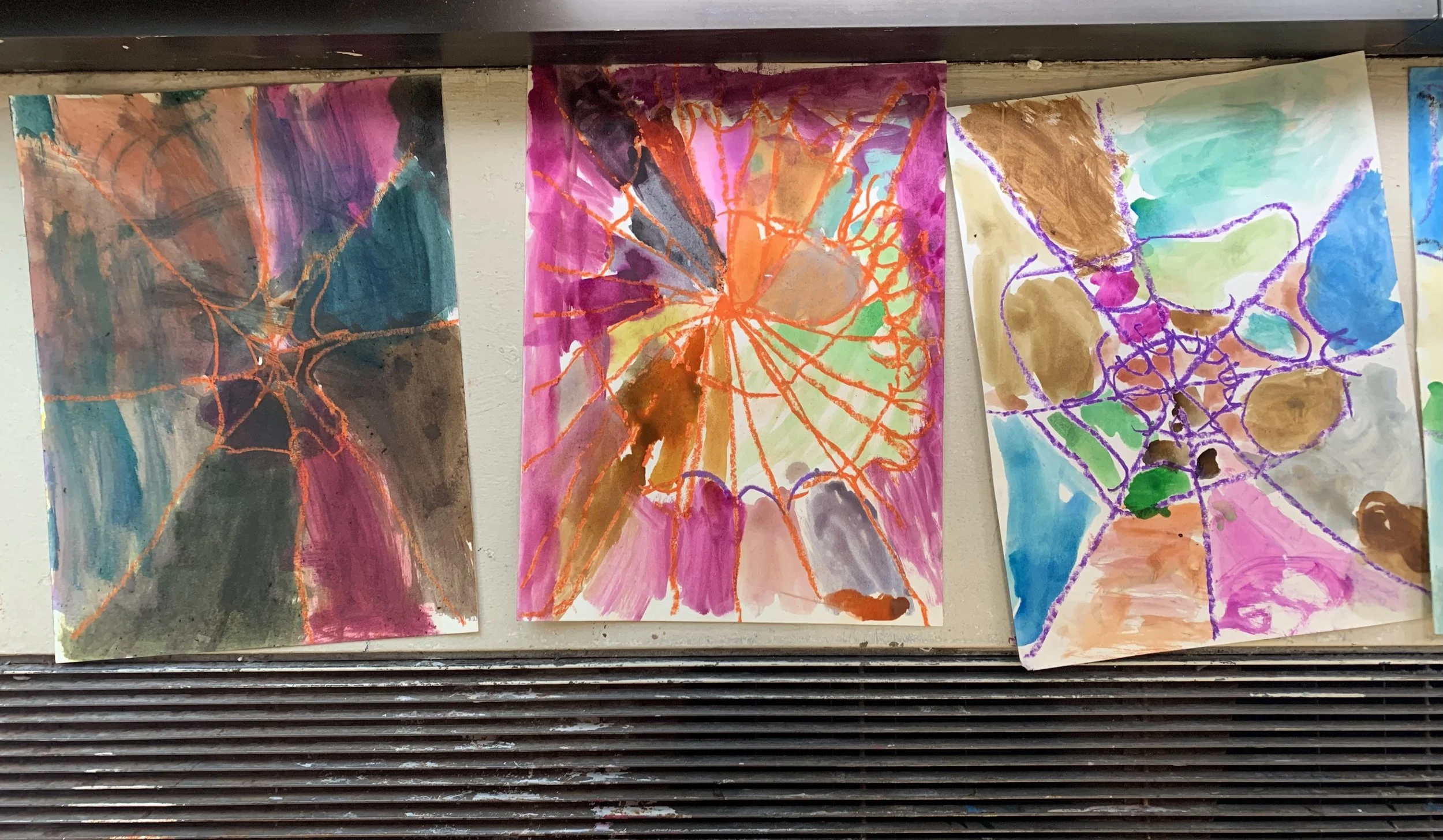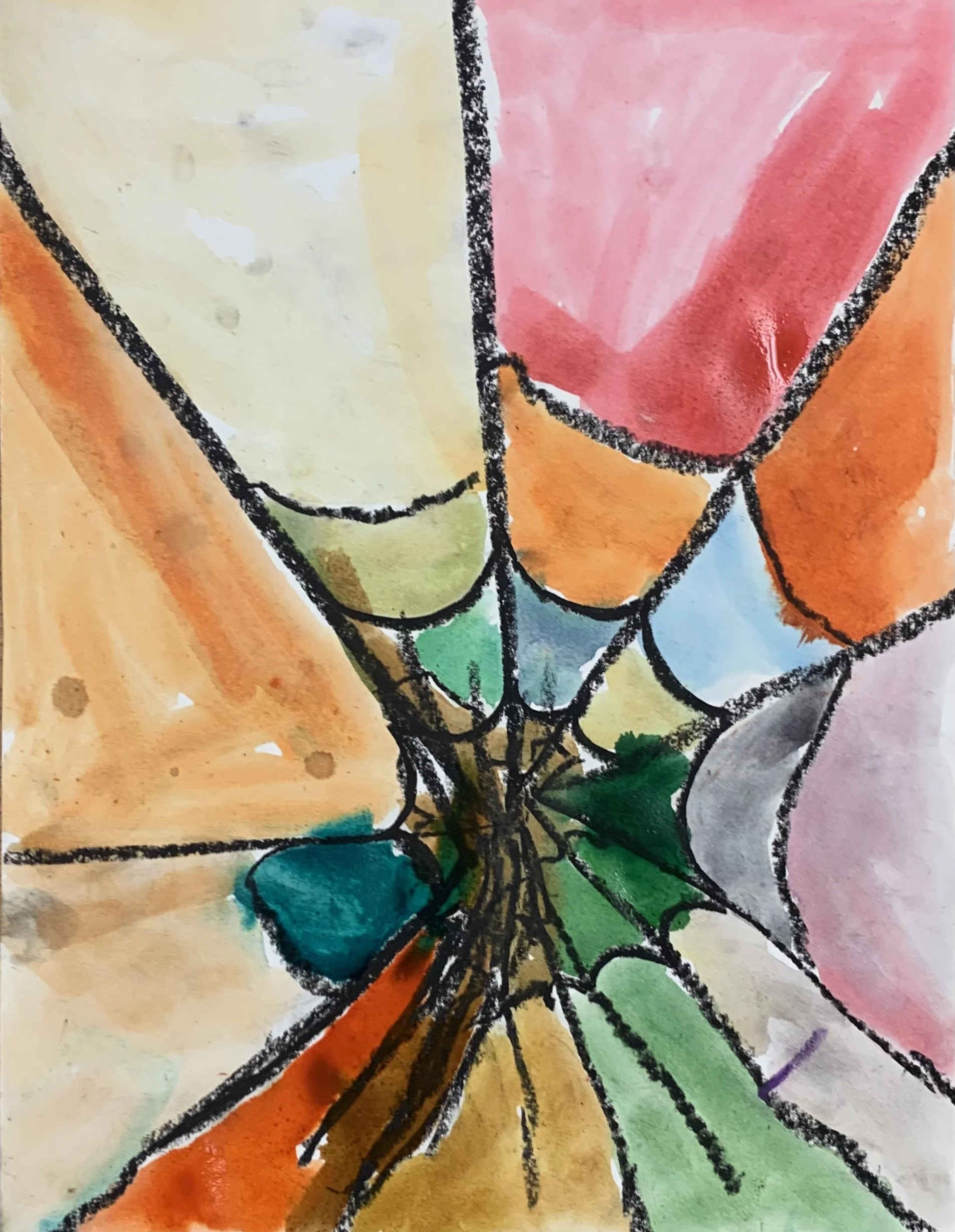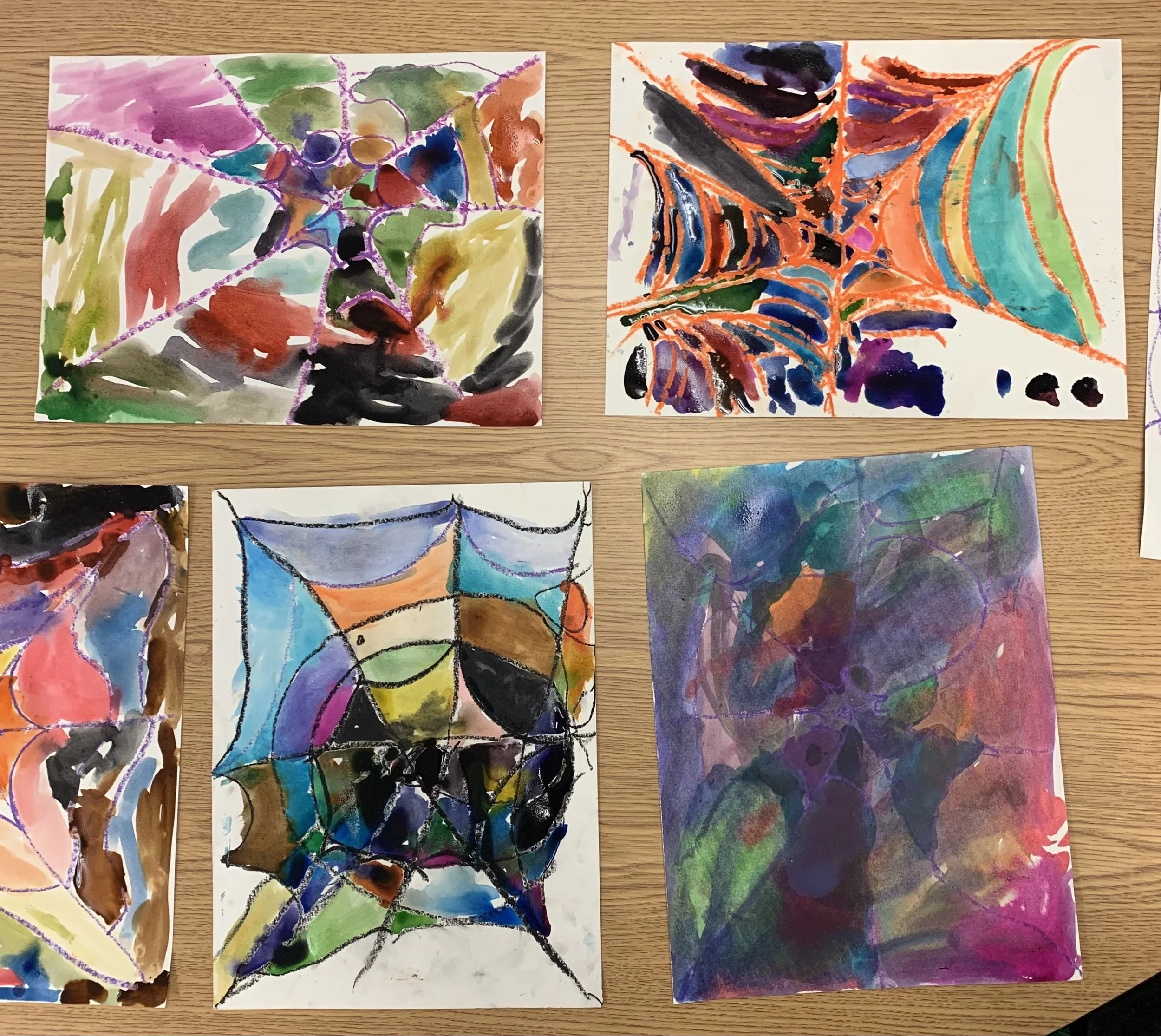Kandinsky Project
Kandinsky Project, Grade 1
In this project, we looked at Russian Abstract artist Wassily Kandinsky. Children were then asked to fold paper into eighths and, using oil pastels, make colorful, consecutive circles in each square. Ideas of color theory, shape, and line are reinforced within this process. Once each square had been filled, students were asked to fill in the gaps of their circles with tempura paints. Having children match the colors of their oil pastels to the color of the paints fosters independent judgment on the part of each student. After a year of remote learning these students were thrilled to be using paints, and socializing in the process. For several of the students, this was their first experience with the medium.
Van Gogh Sunflower Project
Grade 1
First grade students observed the work of Vincent Van Gogh before collaging a tableau of their very own. Kids used tempura paints for the background, paper, crayons, and watercolors for the foreground. This project allowed for students to focus on developing fine motor skills while also utilizing Elements and Principles of Design. Students were encouraged to consider composition as a whole while drawing, cutting, gluing and coloring their artworks. The juxtaposition of solid versus textural and stark versus decorative makes for what I think are very interesting pieces to look at.
Q-Tip Skeletons
In this Halloween themed project, students learned about the structure of the human body while making something unique to the season. I introduced the lesson by asking students who has seen the movie Coco, to which students reacted excitedly. We then spoke about Mexican holiday Day of the Dead, or Día de Los Muertos. After which we looked at masks and costumes attributed to the holiday. Lastly, I showed students Mexican artist Frida Kahlo, who was represented in the movie Coco, so many students were already familiar. As we began constructing our skeletons, I spoke to students about the names of certain bones as well as the function of joints and how they allow us to bend and move. Students were encouraged to place their Q-tip arms and legs in different positions before deciding on how to glue them down. Lastly, we made our very own Calavera masks to adorn our lively skeletons.
Water Color Spider Webs
Kindergarten
For this Halloween themed project, my Kindergarteners were taught how to make spider webs using line. By using a wax based medium as a resist, we were able to use watercolor on top of our spiderwebs without our webs dissolving or spreading. After demonstrating how to use watercolors, students were given total freedom to practice with the medium.






Snow-Friends!
Grade 3
A quick and fun, 2 day project before winter break. Students were instructed to consider how a snowman would look from above. This, along with my step-by-step instruction, enabled students to consider perspective in their own art-work. We spoke about a bird’s eye view versus a worm’s eye view.
Abstract Winter Trees
Grade 2
Children worked on their motor skills cutting both the shapes of the trees, and the blue sky background. After gluing these shapes down we began adding the trunks and branches. At first students did not understand what we were making or how these shapes and unlikely colors could become trees. I asked them to trust me, and as we went along they could see their pictures coming to life. I made sure to mention how even though these aren’t necessarily realistic trees, they are still recognizable as such.
Rainbow Line Project
Adaptive Grade K/1
An introductory project with my Kindergarten and 1st Grade Adaptive Class, children were encouraged to use motor skills and strategic thinking in making their lines. Prior to starting we spoke about types and names of lines and children were encouraged to ‘draw it in the air with your finger’ if they didn’t know the name. This lesson was great in adapting it for varying motor skills. Children with those finer motor skills were encouraged to paint in the shape of their line, going left to right and changing color with each new row. Children who required much more help in developing fine motor skills were provided hand over hand instruction and their lines and rows appear much bigger.
































